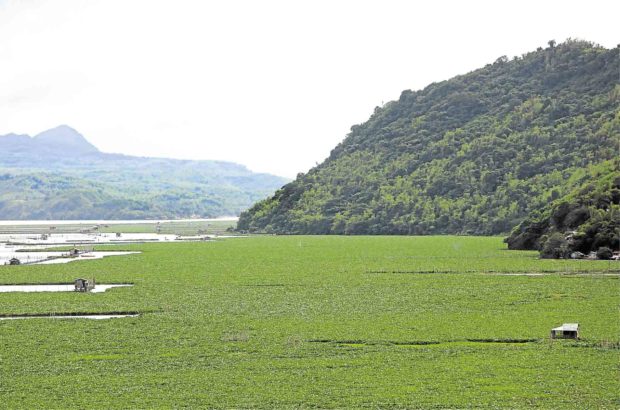
This section of Laguna de Bay in Cardona town in Rizal province remains clogged with water hyacinths, making travel difficult for residents of lakeshore villages.—LYN RILLON
Residents of Cardona town in Rizal province have started availing of a cash- and food-for-work program to help clear a section of Laguna de Bay that is clogged with water hyacinth.
The “infestation,” as referred to by the Laguna Lake Development Authority, began early November at the onset of the northeast monsoon.
It has affected 14 Cardona villages, particularly the livelihood of more than 8,000 fishermen, prompting the local government to declare the town under a state of calamity.
Erwin Dionisio, municipal disaster risk reduction and management officer, said about 280 residents joined the program to manually collect water hyacinths from the lake in exchange for cash and food packs.
“We’ve so far cleared some portions and opened motorways [navigational routes] for the fishing boats. Our municipal fish port (in Barangay Looc) has also reopened,” he said.
Dionisio said workers have so far cleared only about “a fourth” of the total water hyacinth bloom since they implemented cash- and food-for-work programs.
He said the local government would begin using heavy equipment to speed up the excavation and disposal of water hyacinth that covered its lakeshore villages.
Dionisio, however, feared a “second wave” of water hyacinths, given the current wind direction.
He said more are being driven toward their town from other parts of Laguna de Bay, specifically in the towns of Pililia, Tanay and Jalajala.
He said the swaths of water hyacinths had grown too thick “you could actually walk right on top of them and not sink [into the water].”
The Department of Public Works and Highways had committed to send an amphibious excavator here, the same equipment used to clear the Agusan marsh in Agusan del Sur province, to haul and grind the water hyacinth.
“The operation may take two more months to finish,” Dionisio said.—MARICAR CINCO